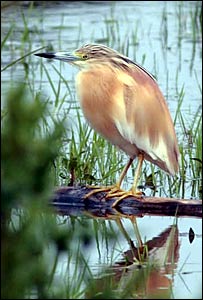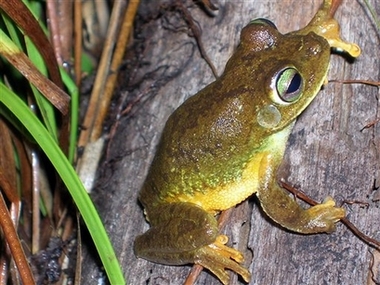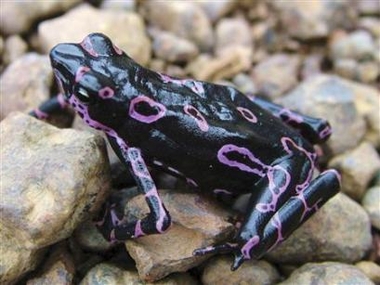Recent New Species in Pictures
Posted by: Loren Coleman on July 9th, 2007
Sometimes a “new species” to the media is one only new to the area and/or out-of-place…

Squacco Heron.

Humboldt Penguin.
Infrequently, a new species is a surprising discovery, unique to zoology…

Eleutherodactylus Frog.

Atelopus Frog.
About Loren Coleman
Loren Coleman is one of the world’s leading cryptozoologists, some say “the” leading living cryptozoologist. Certainly, he is acknowledged as the current living American researcher and writer who has most popularized cryptozoology in the late 20th and early 21st centuries.
Starting his fieldwork and investigations in 1960, after traveling and trekking extensively in pursuit of cryptozoological mysteries, Coleman began writing to share his experiences in 1969. An honorary member of Ivan T. Sanderson’s Society for the Investigation of the Unexplained in the 1970s, Coleman has been bestowed with similar honorary memberships of the North Idaho College Cryptozoology Club in 1983, and in subsequent years, that of the British Columbia Scientific Cryptozoology Club, CryptoSafari International, and other international organizations. He was also a Life Member and Benefactor of the International Society of Cryptozoology (now-defunct).
Loren Coleman’s daily blog, as a member of the Cryptomundo Team, served as an ongoing avenue of communication for the ever-growing body of cryptozoo news from 2005 through 2013. He returned as an infrequent contributor beginning Halloween week of 2015.
Coleman is the founder in 2003, and current director of the International Cryptozoology Museum in Portland, Maine.










Well, those frogs are very, um… pretty. I’m just guessing that the second one is a variety of Poison Dart Frog, because of the bright coloration, usually reserved for toxic species of frog. Is this correct?
CryptoInformant: Some members of the Atelopus genus are known to be toxic, although not from the same family as the poison dart frog. From what I’ve managed to gather, this new purple variety has yet to be fully classified, so no telling if it is toxic or not from the information i’ve found so far.
I would say that although this frog could be merely mimicking a poisonous variety, there is a good possibility that it is indeed poisonous. Frogs typically develop this sort of bright, striking coloration as a warning to predators, sort of an advertisement of the fact that they are bad eating. Judging by the bright purple coloration and pattern of the second frog, I would be willing to say that it is more than likely a poisonous variety.
It could indeed be a mimic of a toxic variety, which, to an experienced predator, is as effective as a deterrant as actual toxicity. I suppose we will have to wait and see.
Well, one thing to look when evaluating whether it is mimicking a poisonous variety or not is whether there are other poisonous species in the area that resemble the harmless type in any way. It does not make sense for a harmless frog to develop bright color patterns as a defense if there is not a similar truly poisonous frog in the area, because if there isn’t, predators will not make the connection between poison and the color pattern. If all there are are tasty colorful frogs and no poisonous ones, then the predators will conversely learn that the colorful ones are good eating and the frogs will be sacrificing camouflage for a color pattern that is useless as a warning while making them easier to spot. Nonpoisonous frogs stand nothing to gain and actually hurt their survival chances by developing bright colors if there are no truly poisonous frogs with similar patterns around.
I googled the name given under the picture, and according to Wikipedia there are several frogs and toads with the “atelopus” as apart of their names. Now, I’m not sure how reliable Wikipedia really is, I don’t usually use them, but to me the coloring would at least say, “Be careful. I may not be as bright as some, but I could make you sick.”